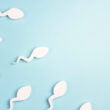At Natural Womanhood, we frequently reference the menstrual cycle’s significance as a “fifth vital sign,” especially— according to the American College of Obstetricians and Gynecologists (ACOG)— for girls and young women. Menstrual cycle disturbances, often caused by chemotherapy, are common amongst female cancer patients. Troublingly, a new study from Australia reports, these menstrual disturbances regularly go unaddressed or are inadequately addressed [1].
Many female cancer patients experience menstrual disturbances
The study authors observed that chemotherapy (chemo), in particular, predisposes women to heavy bleeding, anovulatory bleeding (bleeding episodes but no ovulation) or secondary amenorrhea (cessation of periods in a woman who previously cycled regularly or irregularly). Heavy bleeding in turn puts women at risk of iron deficiency, anemia, and low platelet counts requiring blood transfusion. Among women who lose their periods during chemo, cycles are likely to return but may be irregular, especially in women who are in their 30s or older at time of diagnosis, and/or had never had children before their cancer diagnosis [2]. Furthermore, irregular cycles post-chemo often translate to difficulty getting pregnant [2]. Cancer treatment can also induce menopause.
Despite all this, the study authors wrote, “no guidelines currently exist on how clinicians should address menstruation changes in this context. Current guidelines on the management of people who menstruate requiring cancer therapies focus on fertility preservation rather than the assessment and management of menstrual disturbances” [1].
Who was studied
The study included 137 premenopausal women aged 18-49 who were diagnosed with cancer between 2017 and 2020 at a large cancer center in Sydney, Australia. These women received “chemotherapy, hormonal therapy, immunotherapy, and/or radiation.” Most of the women (54%) were diagnosed with breast cancer, followed by blood or blood cell cancer (20.4%) and gastrointestinal cancer (13.1%). A minority of women had head and neck cancer (4.4%), lung cancer (2.9%), melanoma skin cancer (2.2%), central nervous system cancer (2.2%), or gynecologic cancer (0.7%). 92.7% of women were in their 30s (33.6%) or 40s (59.1%) at the time of their cancer diagnosis. 90.5% underwent chemotherapy and/or surgery (73.7%).
What was studied
The study measured:
- How often menstruation history was documented by healthcare professionals, whether at the initial consultation with an oncology (cancer treatment) team, or at a later time
- How often menstrual disturbances occurred
- How often healthcare professionals provided education about and/or treatment of menstrual disturbances
Menstruation history
Only 16.1% of the women had a menstruation history documented at their first visit with their cancer team, whereas 58.4% of women had this information documented later on. The remainder, 25%, or 1 in 4 female cancer patients, never had documentation in their medical chart about menstruation. Women with a breast cancer diagnosis were most likely to have their menstruation history documented.
How often menstrual disturbances occurred in female cancer patients
Of the nearly 75% of women who did have menstruation history documented at some point during their cancer treatment, 82.4% of them did experience a menstrual disturbance. The most common disturbance was treatment-induced amenorrhea (48.0%), and then “menopause or menopause symptoms (20.6%), irregular menstrual bleeding (16.7%), menorrhagia [heavy bleeding] (13.7%), dysmenorrhea [painful periods] (3.9%), and iron deficiency as a result of bleeding (2.9%).” Multiple women experienced more than one kind of menstrual disturbance.
How often healthcare professionals addressed treatment-induced menstrual disturbances
Despite the vast majority of female cancer patients experiencing some kind of menstrual disturbance over the course of their cancer treatment, just over 18% of study participants were ever counseled on the possibility of experiencing treatment-induced menstrual disturbances like loss of periods, irregular bleeding, or heavy bleeding, and only 7.8% were counseled before treatment(s) began.
Menopause symptoms, iron deficiency, and painful periods were the menstrual disturbances most likely to be addressed. However, only 38% of women experiencing menopause symptoms got help, only 33% of women with iron deficiency were treated, and just 25% of women with painful periods were treated. Amenorrhea caused by cancer treatments was addressed just 8% of the time.
Why don’t cancer care providers address menstrual disturbances?
The study authors opined, “Many cancer physicians and patients with cancer avoid discussions about menstruation due to feelings of discomfort or awkwardness, or because patients’ prognosis may be poor” [1]. And yet, the researchers noted, healthcare professionals need to understand their patients’ baseline menstrual patterns, distinguish between normal and abnormal menstruation, and diagnose and treat menstrual disturbances. “Discussing and documenting a patient’s menstruation history early in cancer assessment is essential, given cancer treatment’s implications on a patient’s fertility, bleeding risk, and psychosocial well-being.”
While these discussions certainly may be uncomfortable, they need to take place, particularly since, as the researchers noted, “prior research has found that people with cancer wish they had been better prepared for potential reproductive issues by their cancer providers” [1].
Do the results of this study apply to everyone?
The researchers acknowledged that the study was retrospective, meaning it evaluated events that occurred in the past–and, of course, human memory isn’t always perfectly accurate. To avoid this issue, future research should also include prospective studies, meaning studies that follow patients over time. Additionally, future research should include whole hospital systems and other geographic regions, since this study focused on care provided to female cancer patients at one large cancer center in Australia.
What needs to change?
What should be done to ensure that menstruation history is documented and then addressed during cancer treatment? On a practical level, there’s a saying in healthcare that “If it wasn’t documented, it didn’t happen.” Any healthcare professional knows that documentation is most likely to occur if it is automated, meaning that it pops up or is flagged as required in an electronic charting system. A simple first step would be to add a menstrual history tool into electronic charting templates for female cancer patients.
The study authors also encouraged education of medical students and doctors ”on the relevant questions patients should be asked and the importance of timely menstrual history-taking” [1]. Certainly, more education amongst healthcare professionals is necessary, especially about the basics of the natural female cycle and the health benefits of ovulation, aka why the menstrual cycle is the “fifth vital sign.”
But the most important piece in all this may be educating and empowering individual women to know what’s normal and what’s not for their own cycles. This enables them to become effective self-advocates, whether with their OB/GYN or a cancer doctor. At Natural Womanhood, we strive to ensure every woman knows that through fertility awareness methods she can learn to read her own biological data, and to use that data in whatever way she needs, be it for family planning or health monitoring. Inadequate or absent attention to treatment-induced menstrual disturbances in female cancer patients may be the status quo, but it needn’t remain that way.
References:
[1] Chadwick, V., Kim, M., Mills, G., Tang, C., Anazodo, A., Dear, R., Rodgers, R., Lavee, O., Milliken, S., McCaughan, G., Moore, J., Withers, B., & Hamad, N. (2023). Rates of Menstrual History-Taking and Counseling With Anticancer Treatments Are Low: People Who Menstruate Deserve Gender-Specific Cancer Care, Journal of the National Comprehensive Cancer Network, 21(4), 366-372. Retrieved May 3, 2023, from https://jnccn.org/view/journals/jnccn/21/4/article-p366.xml [2] Jacobson MH, Mertens AC, Spencer JB, Manatunga AK, Howards PP. Menses resumption after cancer treatment-induced amenorrhea occurs early or not at all. Fertil Steril. 2016 Mar;105(3):765-772.e4. doi: 10.1016/j.fertnstert.2015.11.020. Epub 2015 Dec 1. PMID: 26658130; PMCID: PMC4779728.Additional Reading:
Lisa Hendrickson-Jack explains how natural menstrual cycles provide the “fifth vital sign”







